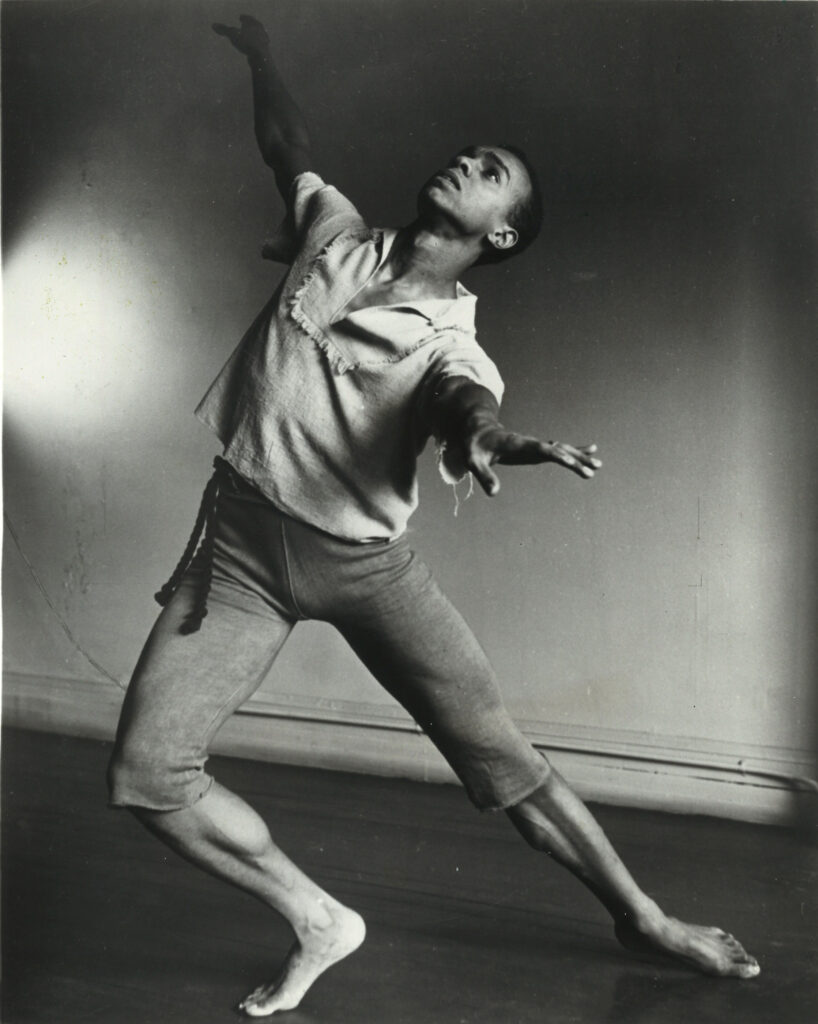Celebrating Donald McKayle: His Choreography Shed Light On Social Injustice
Choreographer, dancer, and teacher Donald McKayle established a strong foothold for dancers of color by creating work that commented on social injustices, challenged racial norms, and conveyed the Black experience. As a member of the politically active dance collective New Dance Group in the late 1940s, he developed an emotionally rich choreographic style inspired by several dance techniques. Over the span of his six-decade career, he choreographed more than 90 works.
Born in New York City in 1930, McKayle was introduced to dance as a teenager via a school dance club. After seeing Afro-Caribbean choreographer Pearl Primus perform at a local high school, he decided to pursue dance seriously. He auditioned for and received a scholarship to the NYC-based New Dance Group, where Primus taught, and began studying ballet, Afro-Caribbean, and modern. This training gave McKayle both a diverse and technically sound movement style and a socially conscious approach to choreography.
At 19, he joined the Contemporary Dance Group—a small company directed by concert and Broadway choreographer Helen Tamiris. In a concert with fellow company members the next year, he premiered Games, a group dance about the hardships of growing up in an urban environment. The critical success of Games launched his choreographic career and secured his reputation as a socially minded artist.
McKayle continued to choreograph and perform while studying with Martha Graham and postmodern choreographer Merce Cunningham. He set work on his own company, Donald McKayle and Company, and accepted commissions to choreograph for theater and television. In 1959, he created what is now considered his greatest work, Rainbow ‘Round My Shoulder—a heart-rending piece about the tragic lives of Southern chain-gang prisoners.

McKayle also had a successful career on Broadway. He performed in House of Flowers (1954) and West Side Story (1957) and began choreographing for Broadway in 1959, including Sophisticated Ladies (1981). He was nominated for five Tony Awards—four for best choreography and one for best direction of a musical (Raisin, 1974).
After teaching stints at the New Dance Group, Juilliard, Sarah Lawrence, Bard College, and Bennington College, he joined the faculty at the University of California, Irvine, in 1989 as a professor of dance. He retired from UCI in 2010, but was invited back as a professor emeritus of dance in 2016.
Style
McKayle had a diverse technical vocabulary at his disposal. From Martha Graham, he acquired the use of the torso—contracting, arching, and twisting to punctuate emotion. Like Cunningham, McKayle often kept arm and leg movements independent of each other. Circular arm movements and fan kicks are common motifs in his choreography, as well as unison and pedestrian movement. Most of his works tell a story and are emotionally driven.
Resources
Print
Transcending Boundaries: My Dancing Life (Routledge, 2002)
Online
Read McKayle’s tribute in Dance Teacher here and in Dance Magazine here.
Read McKayle’s interview in Dance Magazine here.
Editor’s note: McKayle was a 2005 Dance Magazine Awards recipient.
The post Celebrating Donald McKayle: His Choreography Shed Light On Social Injustice appeared first on Dance Teacher.